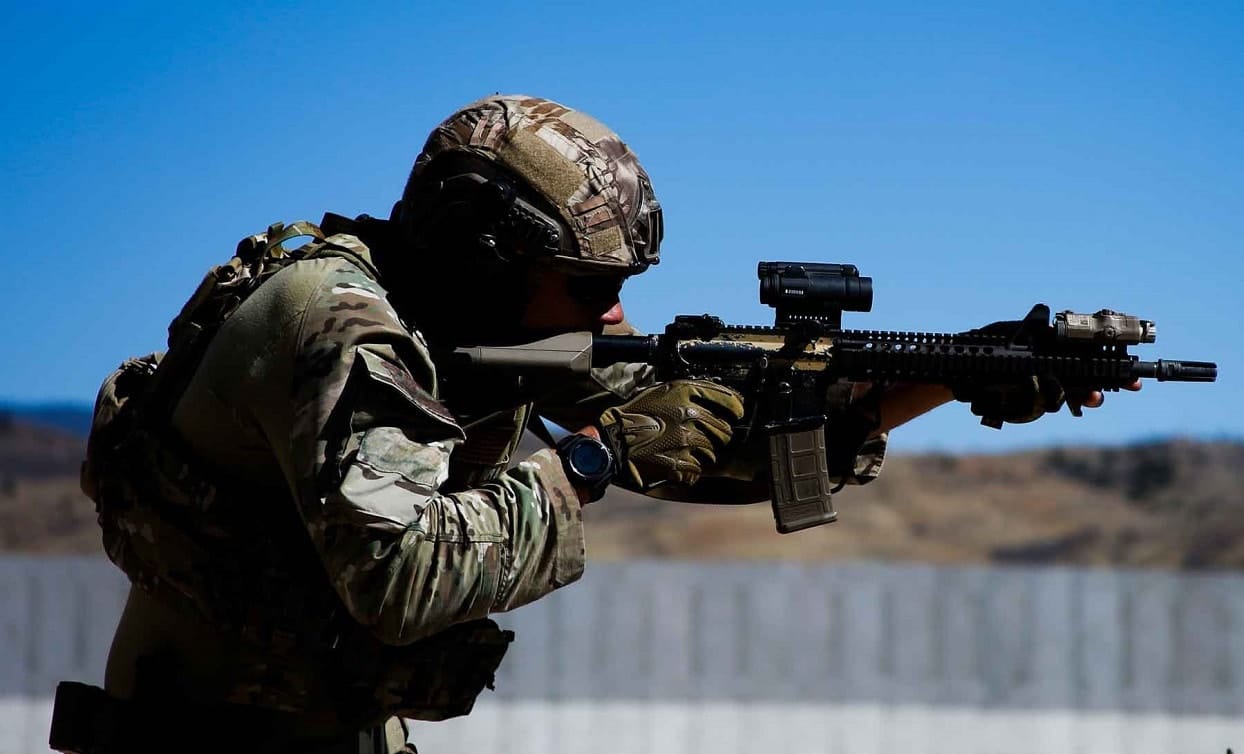Steve Balestrieri

The U.S. Army’s Special Forces are known to most as the Green Berets. These legendary soldiers have been honored in books, films, and songs.
In September, troops past and present will gather in Colorado Springs to celebrate the 70th anniversary of the founding of the Special Forces.
At any given time, Army Special Forces can be found in 80 to 90 countries around the world, conducting missions essential to U.S. and allied nations’ security. They are the shadow warriors, the “quiet professionals.” The training pipeline is long. Candidates must pass through several phases before they can earn the right to wear the Green Beret and bear the title.
What makes these troops so unique? While the paragraphs below will spell out several key reasons, the short answer is: everything.
History of Special Forces
The Army’s Special Forces were officially founded on June 11, 1952, at Smoke Bomb Hill at Ft. Bragg, North Carolina, during the height of the Cold War. Col. Aaron Bank was the first commander and has been considered the “Father of Special Forces” since he formed the 10th Special Forces Group. The Army chose that designation – 10th SFG – to confuse the Soviet Union into believing that more special forces groups would meet them if they chose to invade Western Europe.
Many of the original plank holders, Bank included, hailed from the World War II Office of Strategic Services, the first U.S. military/civilian intelligence agency and the forerunner of both the Special Forces and the CIA.
In 1953, the 10th SFG was split, with Bank taking the 10th to Bad Tolz, Germany, while the troops that remained in Ft. Bragg formed the 77th Special Forces Group cadre. In 1960, that group was redesignated the 7th SFG.
Special Forces went through a large expansion during the war in Vietnam. Special Forces A-camps were dotted throughout South Vietnam, where troops trained ethnic Vietnamese and Montagnard tribes in the Civilian Irregular Defense Group program. They also conducted special operations under the MACV-SOG (Studies and Observation Group). More than 20 Medals of Honor were awarded to special forces troops for actions during the Vietnam War.
After a drawdown in the 1970s, SF was re-energized in the 1980s, and Special Forces became its own branch on April 9, 1987. The Special Operations Command, or SOCOM, was formed to place all SOF units under one umbrella organization.
SOCOM has grown exponentially since the onset of the Global War on Terror, and Green Berets have served in the hot spots of both Iraq and Afghanistan. Special Forces and CIA paramilitary operators were the first on the ground in Afghanistan, just weeks after the 9/11 attacks.
Long, Arduous Training
The training for Green Berets begins with the SF Assessment and Selection Course. Once a candidate is selected for training, they begin the SF Qualification Course. The training can last anywhere between 55 and 95 weeks, depending on the occupational specialty. Green Berets are typically a bit older and more mature than their conventional counterparts.

Special Forces medics are highly trained. In some cases, when operating in the Third World, they are better trained than some nations’ doctors. Medics are arguably the biggest rapport-builders when deployed. Their training pipeline is the longest of all the specialties.
Special forces troops are trained in several different missions, but their bread and butter is unconventional warfare, an area where they have no peers in the U.S. military. Primary special forces missions include but are not limited to:
– DIRECT ACTION – Direct Action missions are short-duration strikes used to seize, capture, recover or destroy enemy material, or recover personnel.
– SPECIAL RECONNAISSANCE – Actions conducted in sensitive environments to collect or verify information of strategic or operational significance.
– COUNTERINSURGENCY – Special Forces troops respond to terrorist activities and train other nations’ militaries in the basics of fighting insurgents.
– UNCONVENTIONAL WARFARE – The primary Special Forces operation, unconventional warfare comprises activities conducted to enable a resistance movement or insurgency to coerce, disrupt, or overthrow a government or occupying power by operating through or with an underground, auxiliary, and guerrilla force in a denied area.
– FOREIGN INTERNAL DEFENSE – This is the act of training and equipping foreign allied military forces to defend against insurgency, subversion, terrorism, and other security threats.
– SECURITY FORCE ASSISTANCE – Special Forces soldiers train and develop the defense capabilities of friendly and developing nations.
Special Forces troops serve in 12-man A-Teams, frequently in small, isolated bases away from conventional support. They must be able to adapt to and overcome obstacles on their own. The typical 12-man A-Team is comprised of:
18A – Special Forces Officer
180A – Special Forces Warrant Officer
18B – Special Forces Weapons Sergeant
18C – Special Forces Engineer Sergeant
18D – Special Forces Medical Sergeant
18E – Special Forces Communications Sergeant
18F – Special Forces Intelligence Sergeant
18Z – Special Forces Operations Sergeant
Special forces groups are area-oriented toward a language and culture so that Green Berets can teach and train alongside partner-nation troops and speak to them in their own language.
A-Teams are specialized, and each company will have designated Mountain, SCUBA (Combat Diver), Military Free Fall (HALO) teams, and other specialties.
A Green Beret Is a Fighter and a Teacher
Several years ago, I wrote an article about how teaching is an art for Green Berets. While the training of our allied partners isn’t as sexy as the door-kicking Direct Action missions, it is an essential task.
Being able to reach and teach a foreigner in his own language is a tremendous boost to building rapport, earning trust, and creating a successful team with foreign allies. That’s where cultural awareness and language training become so important.
There are many special operations forces in the U.S. military. But only one is designated Special Forces: The Army’s Green Berets.
No comments:
Post a Comment